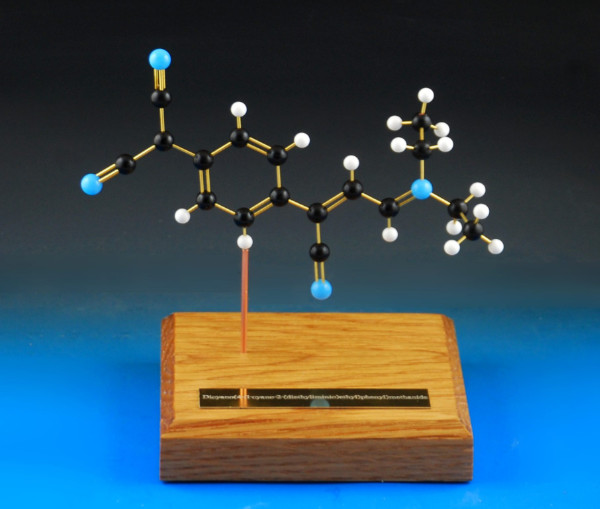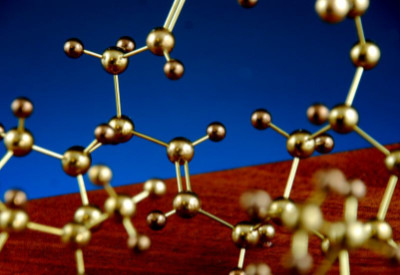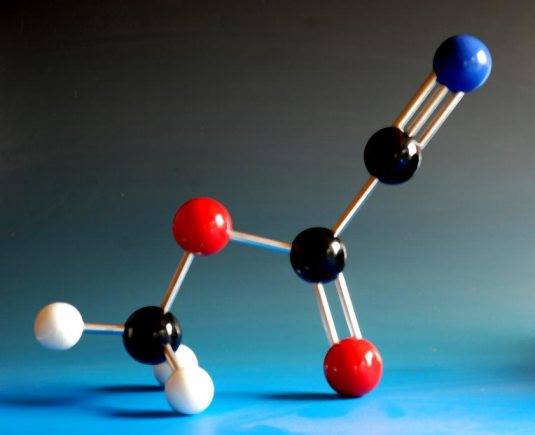Most of our models comprise balls that are linked through single bonds, as that accentuates the spacial relationship between the atoms in the crystal or the molecule.
Sometimes, though, the multiple bonds in the structure are important and the customer needs them to be explicitly shown in the in model.

Multiple bonds are readily incorporated into our large and giant models, due to the size. More recently, we have developed ways to include multiple bonds into our small-scale Beevers models - double and triple bonds can be explicitly shown in the model, but, for it is not practical to incorporate multiple bonds of highre order without significantly weakening the ball.
All of our larger scale models (including our giant molecular models) can be made with double bonds, triple bonds or quadruple bonds as part of the structure. We have never attempted quintuple or sextuple bonds and, given their extreme rarity, we doubt that we'll ever need to, but we could include them in larger models if it were ever necessary. Similarly, we can include multiple bonds in allenes, cumulenes and similar structures.
For bond orders of 3 and above, our default design is to have the bonds symmetrically arranged around the bond axis, rather than to have the rods in a line, but we also offer other arrangements as the customer prefers. So, a triple bond cut across its axis would have three rods at the corners of an equilateral triangle rather than looking like a double bond with an extra bond added in the middle. A quadruple bond would be arranged with either four bonds in square, or a central bond and three surrounding bonds in an equilateral triangle.

Preferred arrangements of multiple bonds (green) and other common options. Quadruple bonds and higher are not practical for 7mm balls.

Model of the an organic compound, made with 7mm brass balls, and including double bonds.
Contact us for more details and to discuss your requirements.
